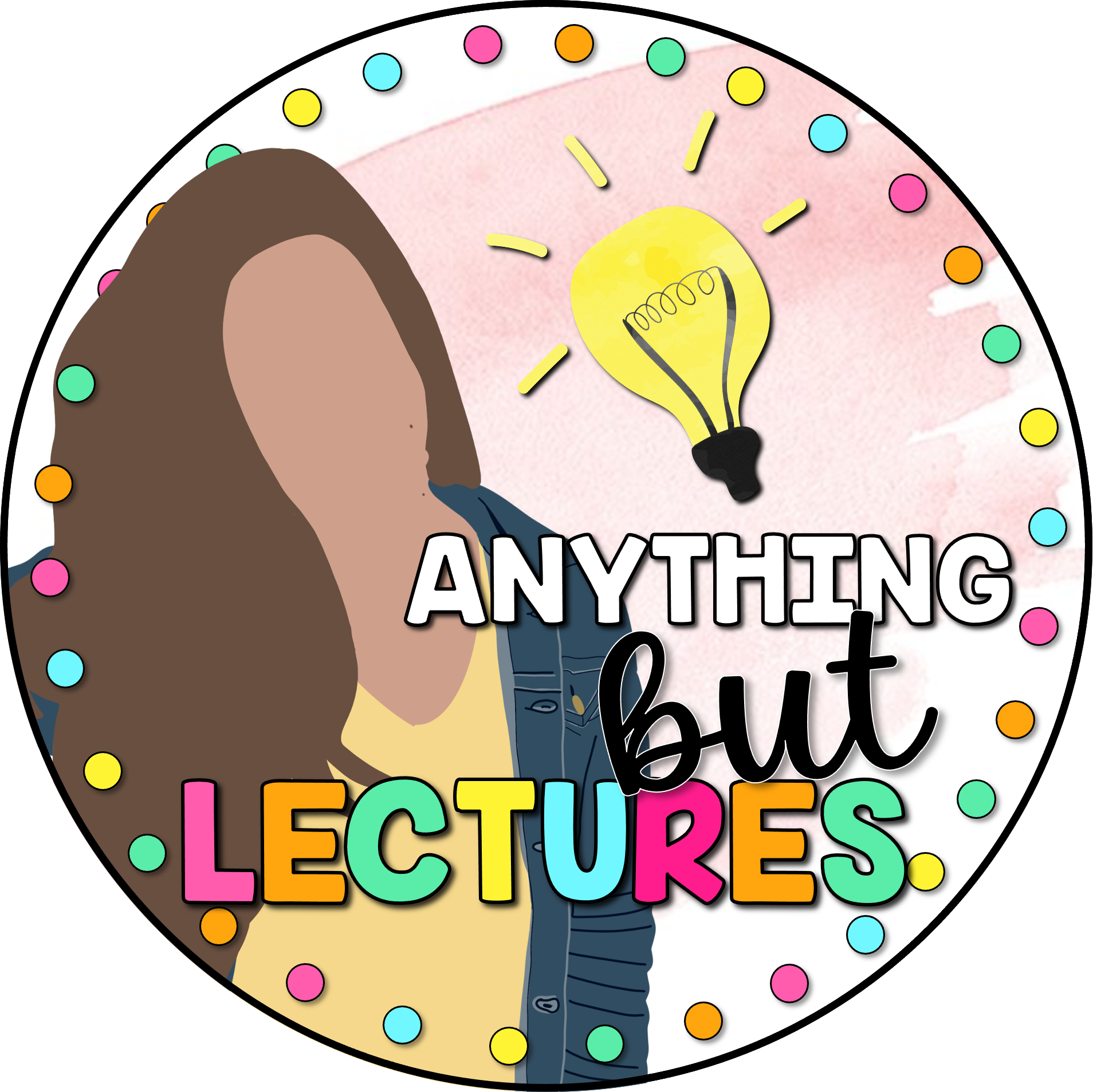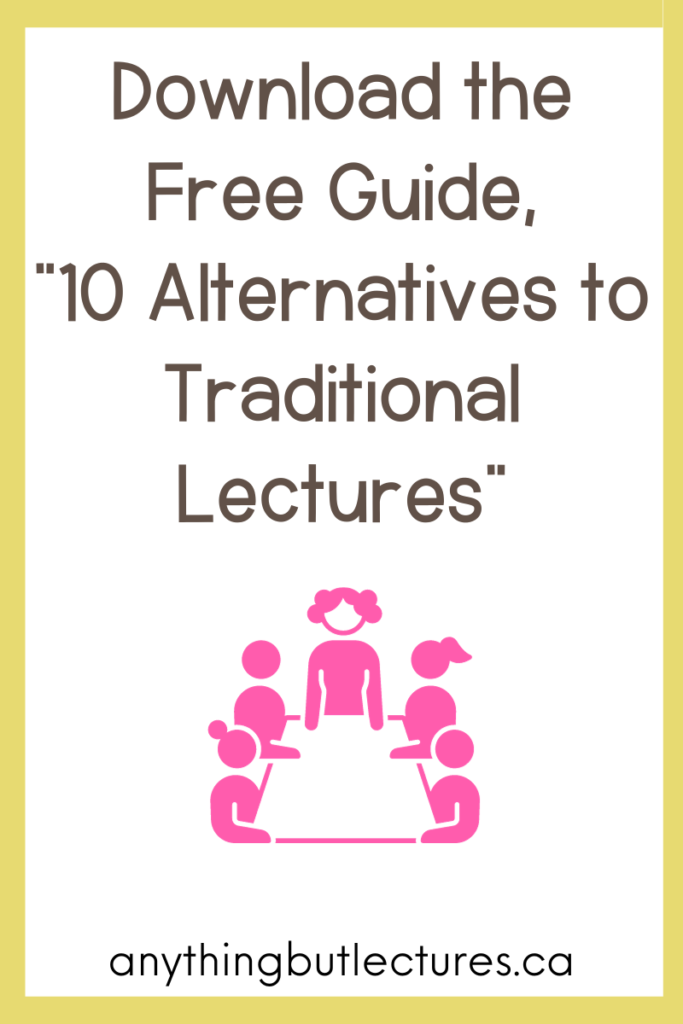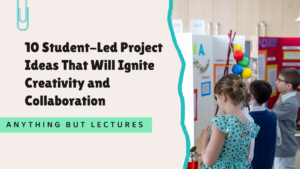In the quest to move beyond traditional lectures and explore alternative teaching methods, one significant challenge that educators often encounter is how to effectively include student-based assessment in their planning.
While traditional testing and grading methods may not always align with active and hands-on learning experiences, it’s crucial to evaluate student progress and comprehension.
In this blog post, I will delve into strategies and techniques for assessing student learning in non-lecture formats, drawing insights from my free guide, “10 Alternatives to Traditional Lectures.”
The Shift in Student-Based Assessment Paradigm
Traditional lectures often culminate in assessments that primarily measure a student’s ability to memorize and regurgitate information. However, alternative teaching methods place emphasis on critical thinking, problem-solving, and practical application of knowledge. This shift requires a change in how we assess student learning.

Let’s Explore Some Student-Based Assessment Strategies
1. Formative Assessment
Formative assessment techniques, such as quizzes, polls, and class discussions, allow educators to gauge student understanding during the learning process. Frequent, low-stakes assessments provide valuable feedback to both teachers and students, enabling timely adjustments.
2. Rubrics for Project-Based Learning
If you’ve embraced project-based learning as an alternative, you know that rubrics are crucial. Clearly defined rubrics help students understand expectations and provide educators with a structured way to evaluate the quality of their work.
3. Peer Assessment
Peer assessment encourages students to evaluate and provide feedback on their peers’ work. This approach not only promotes collaboration but also helps students develop a deeper understanding of the subject matter.
4. Portfolios and Journals
Incorporate the use of portfolios and reflective journals, where students compile their work and document their learning journey. This approach allows students to showcase their progress and insights over time.
5. Socratic Seminars and Discussions
For discussion-based alternatives, employ techniques like Socratic seminars. These foster critical thinking and communication skills, which can be assessed through thoughtful facilitation and analysis of discussions.
6. Observation and Participation
In interactive learning environments, observation and participation become essential assessment tools. Take note of students’ engagement, contributions, and application of knowledge during hands-on activities.
7. Self-Assessment and Goal Setting
Encourage students to self-assess their work and set learning goals. This process promotes self-awareness and accountability and can be used as a form of assessment.
Final Thoughts on Student-Based Assessment for Non-Lecture Formats
Assessing student learning in non-lecture formats requires a shift in perspective and the adoption of innovative techniques. These strategies not only align with alternative teaching methods but also enrich the learning experience, providing a more holistic view of student progress.
To dive deeper into these assessment strategies and explore how they align with specific alternative teaching methods, don’t forget to download our free guide, “10 Alternatives to Traditional Lectures.” It provides valuable insights and practical tips to help you navigate the evolving landscape of education successfully.
Incorporating these assessment strategies into your teaching toolkit will not only help you effectively evaluate student learning but also enhance the overall educational experience, fostering critical thinking, creativity, and lifelong learning skills in your students.
Click here to check out my related blog post, Student-Centered Education: The Teacher Success Path for the Classroom





